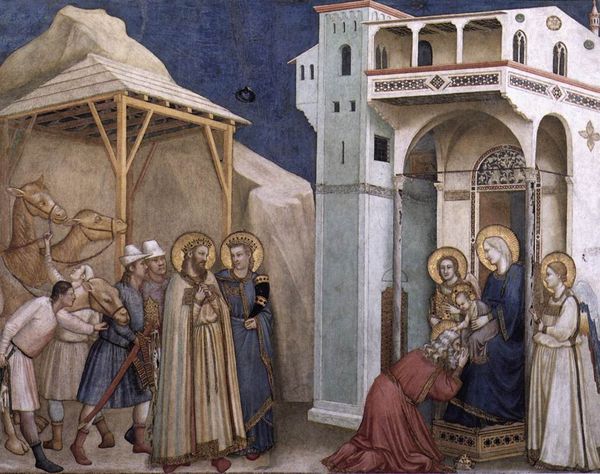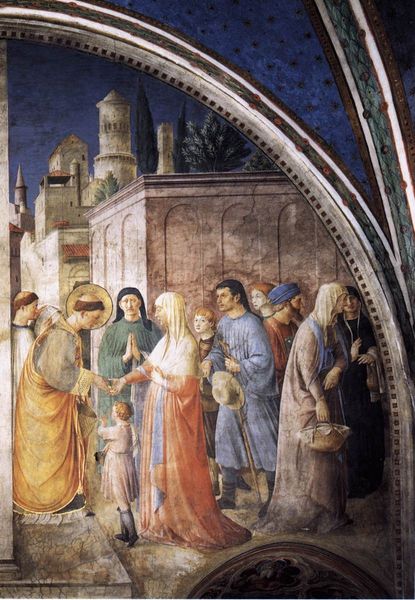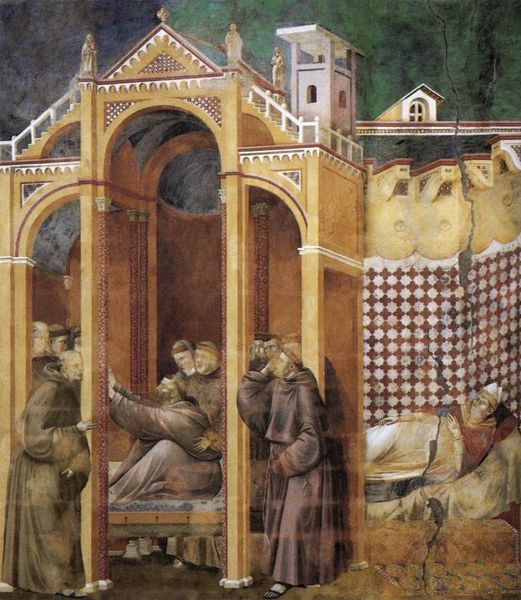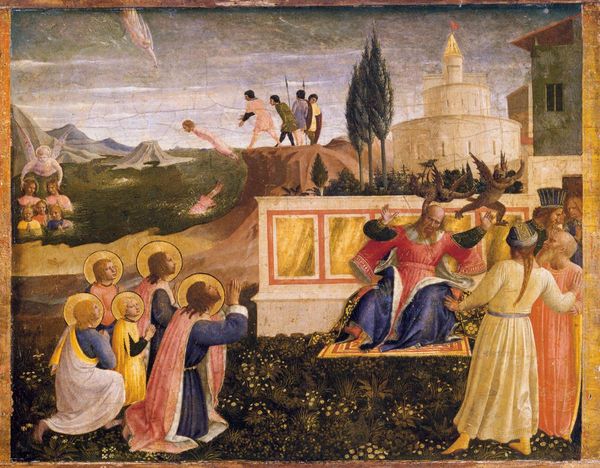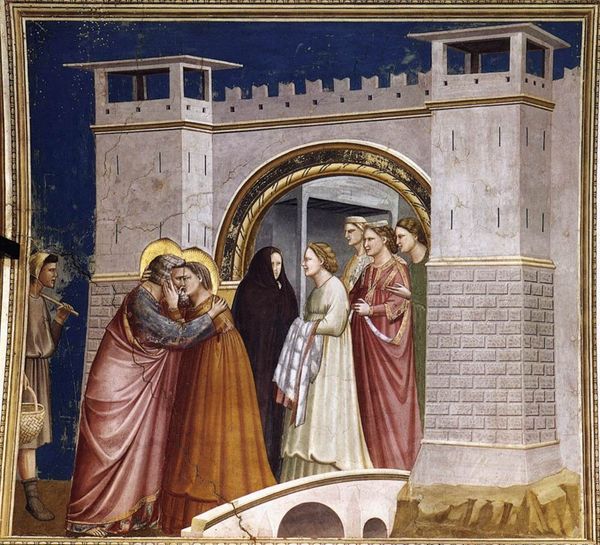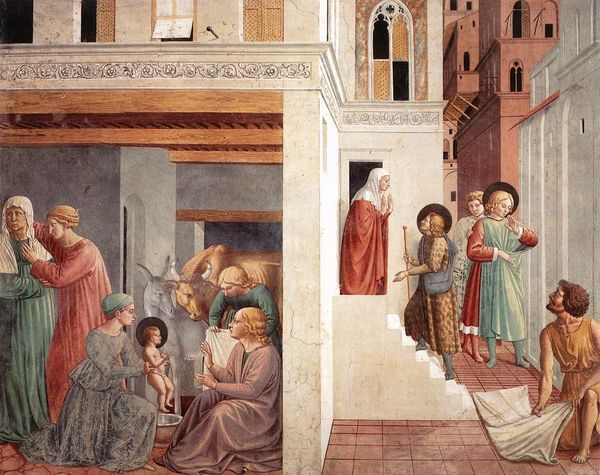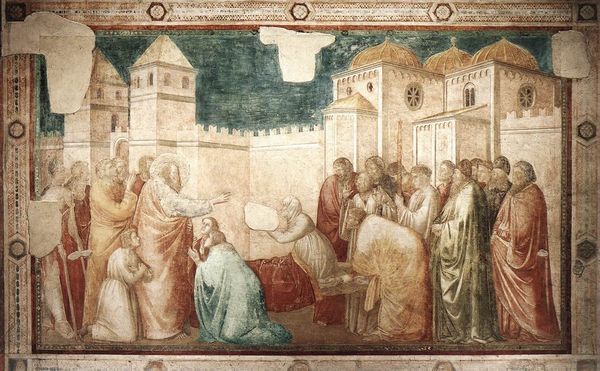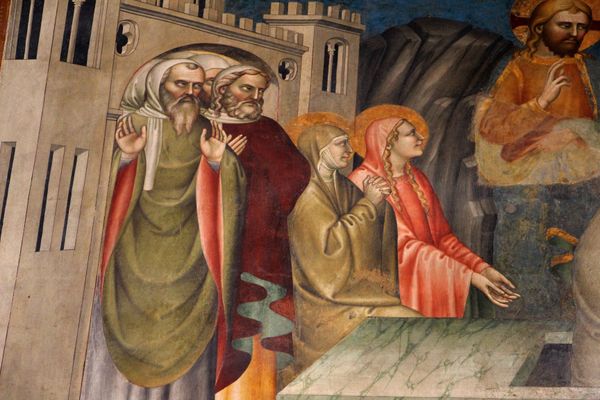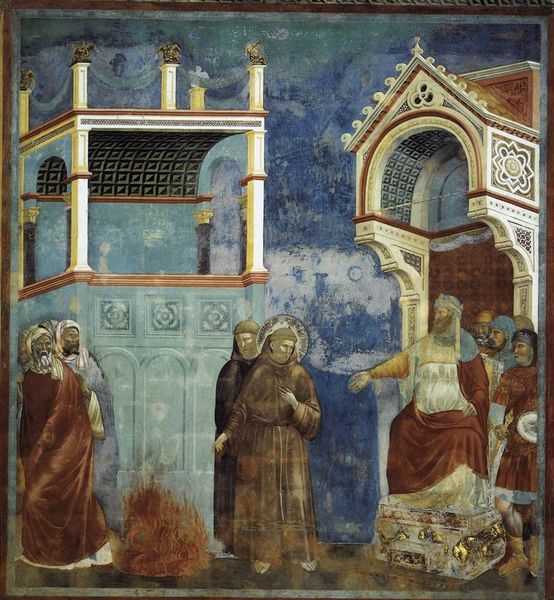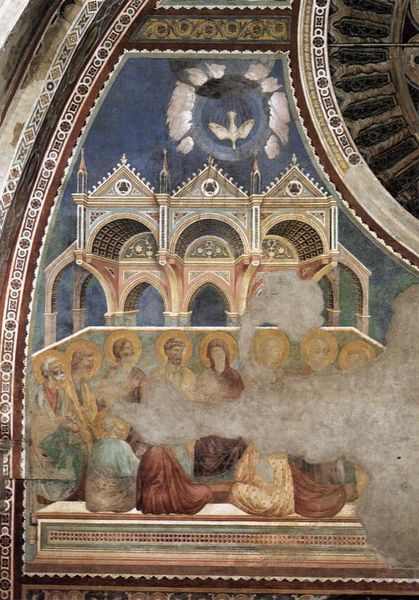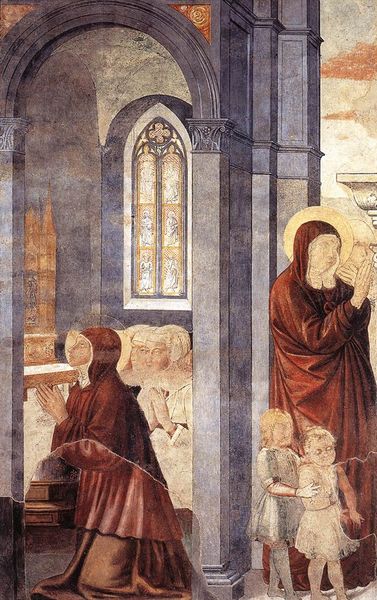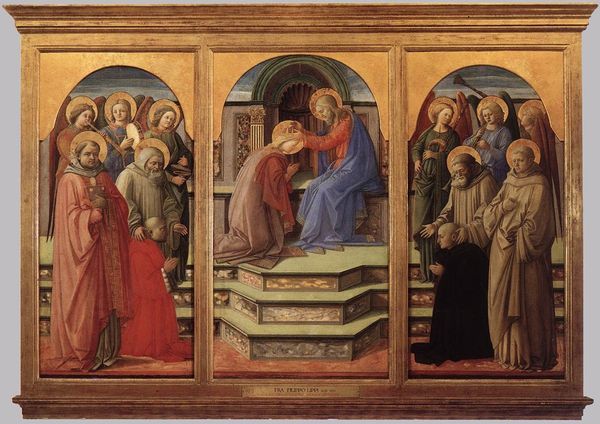
tempera, fresco
#
portrait
#
medieval
#
narrative-art
#
tempera
#
gothic
#
landscape
#
figuration
#
fresco
#
christianity
#
history-painting
#
italian-renaissance
Copyright: Public domain
Editor: Here we have Giotto's fresco, "Return of Christ to Jerusalem," painted around 1320, currently residing in the Basilica of Saint Francis of Assisi. It's, uh, rather striking with that imposing city looming in the background, feels a little...theatrical? What's your take on this scene? Curator: Theatrical, yes, perhaps a bit staged. Giotto’s like a director placing his actors on the set, isn’t he? That city... almost feels like a cardboard cutout, doesn’t it? Think of Giotto wrestling with how to represent not just space, but also profound, eternal ideas. This fresco feels deeply personal, almost a yearning to ground these divine figures in a tangible reality, like trying to capture a dream. I see Giotto experimenting... how does that sit with you? Editor: That makes sense! The figures do seem very… present. Almost like portraits. Curator: Exactly! Giotto infuses them with a certain humanness that hadn’t really been seen before. Almost like he's saying, "Look, divinity isn't some abstract concept, it's here, among us, in these very real faces and gestures." Do you sense that direct connection? And see how those glances knit together? It’s so much about human to human relation, framed by belief. Editor: Yes, definitely. I hadn't really considered it that way before, but seeing the expressions and how they're interacting makes it more relatable. Curator: Precisely! Art like this, Giotto at his best, shows the intimate play between the real and the imagined. Now tell me, does your understanding of early Italian Renaissance art shift ever so slightly? Editor: Absolutely! It's less about just the religious story and more about the human experience within that context. Curator: Indeed. Next time you see one of his paintings, remember this discussion! The heart beating beneath the divine.
Comments
No comments
Be the first to comment and join the conversation on the ultimate creative platform.


